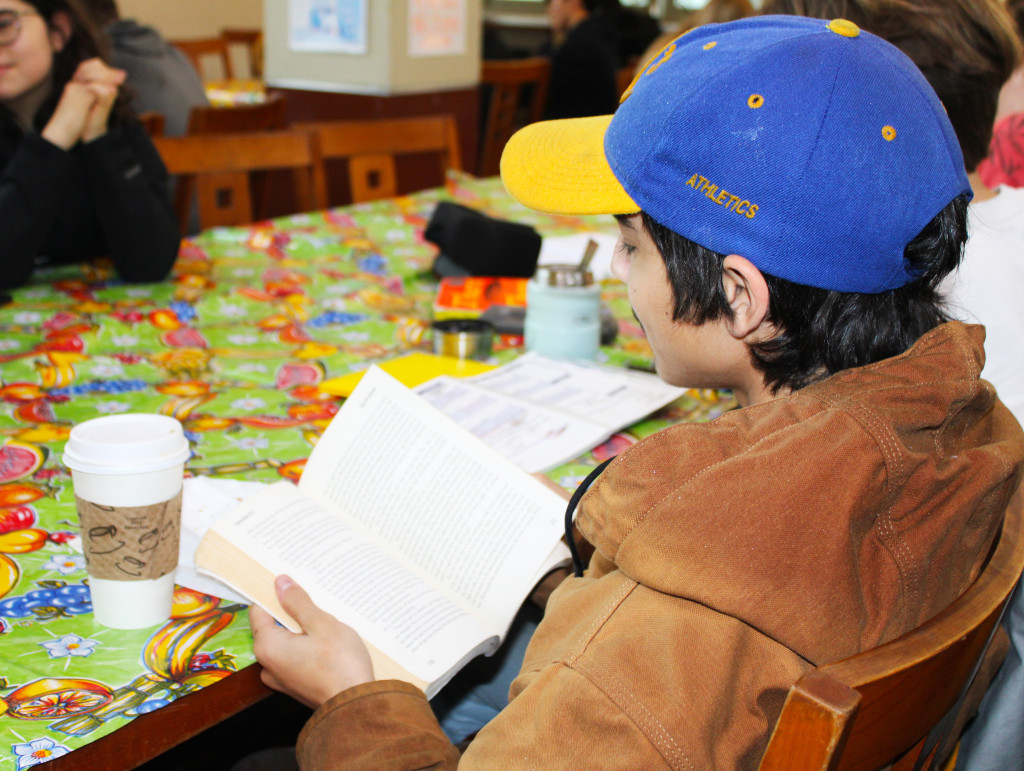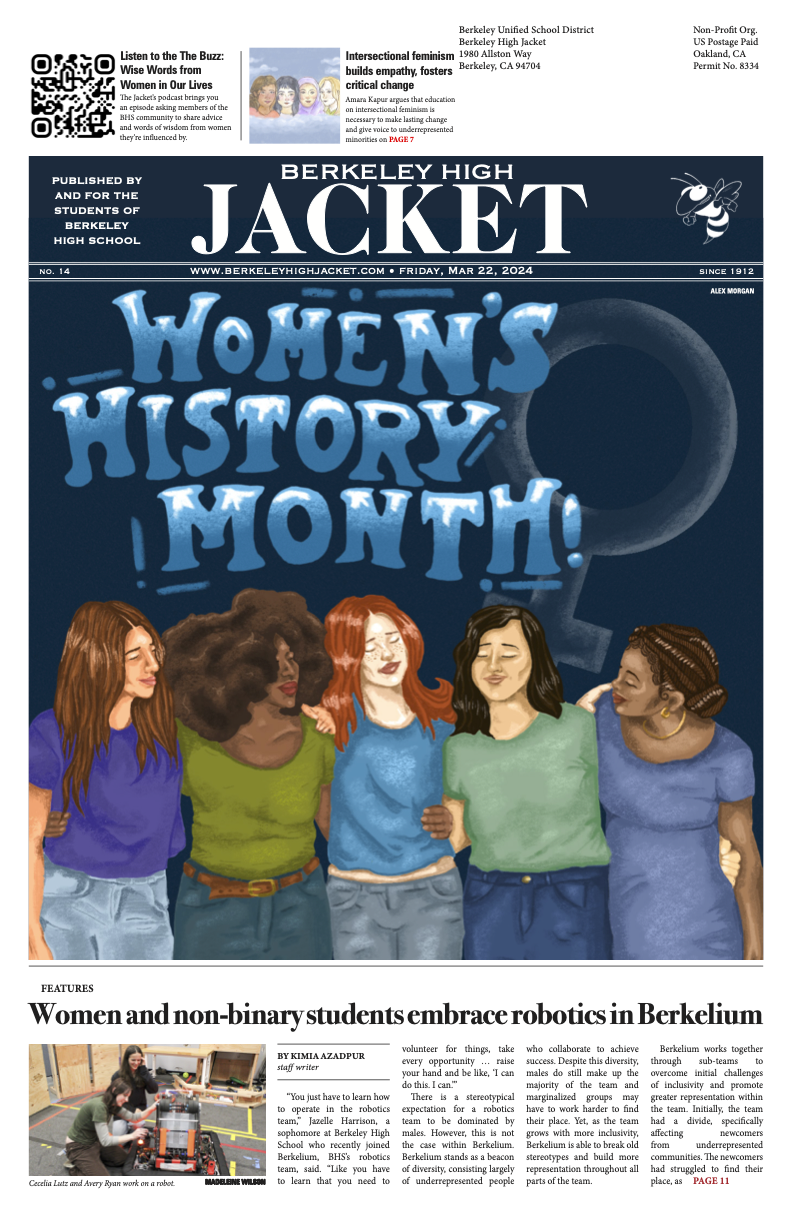“I had a kid come into my classroom who, as a fifth grader, had not been to school since kindergarten and had not been homeschooled… she was light years behind all the other kids,” Robert Frederick, a fifth grade teacher at Malcolm X Elementary School, said. Frederick worked with the student throughout the year, both one-on-one and in small groups. By the end of the year, “she (had) moved from a first-grade level to a late third-grade level,” Frederick said.
Many students in Berkeley Unified School District (BUSD) struggle with literacy – or, English and Language Arts (ELA) – but what programs are available varies by grade level. In elementary school, kids who need support with reading can be pulled out of class for one-on-one lessons. Read-180, a class that specifically supports literacy, is offered in middle schools. However, neither of those are available to students at Berkeley High School (BHS). According to BUSD’s 2022-23 Local Control and Accountability Plan (LCAP), the Learn, Engage, Accelerate, and Persist program (LEAP) is a class that gives students extra academic support and skill-specific lessons, and prepares them for college and/or careers. However, it’s only available to BHS freshmen because it’s meant to assist in the transition from middle school to high school.
“There are some students who are reading below grade level, who aren't in LEAP or who aren't in special ed, and for those students, there is no current intervention,” Julie Panebianco, co-lead of the Universal Ninth Grade English Department and Hive 6 English teacher, said.
BUSD has been experimenting with different ways to combat literacy struggles. Last year, along with the Northwest Evaluation Association (NWEA), BHS tried a computerized program called MyPath, which is designed to help with specific skills students lack. However, according to Panebianco, this system proved to be unpopular.

“It just felt like drudgery to complete… we need to look at structural changes, not just putting a band-aid on a situation by throwing computer programs at kids,” Panebianco said.
Starting this school year, the district abandoned NWEA and MyPath and has instead focused on targeted literacy lessons for students in LEAP or with IEP’s that struggle with ELA. Now, freshmen take the Standardized Test for Assessment of Reading (STAR) test that was also taken in middle school. In the past, STAR assessments were only given to middle and elementary schools, so this new change means that the school can track freshman literacy levels directly.
“(In the past two years) this is the first time we have ever received specific data to assess literacy levels,” Panebianco said.
Additionally, Frederick said the district has implemented a new program in the elementary schools, Dynamic Indicators of Basic Early Literacy Skills (DIBELS), instead of a past program called Running Records. Running Records involved recording a student’s reading skills as they read from a book. In DIBELS, he assesses them, he puts them into reading groups, where oftentimes, the kids will have similar things they need to work on. If he senses changes in the dynamics, he will shuffle the kids around to make sure they are being challenged.
However, according to Sumita Soni, a third grade teacher at Berkeley Arts Magnet School, literacy assessments may have some underlying biases. She explained how kids come into schools every year with different life experiences and different kinds of knowledge.
“These assessments are biased around the middle-class experience… we need to build more bridges… (expose them to) literature that builds on what they know from their life,” Soni said.

However, according to data shared with the Jacket by Trish McDermott, BUSD’s Senior Communications Officer, the district’s experimentation with different literacy programs seems to be having a positive impact. In the 2023-24 school year, 69.94 percent of students in BUSD met or exceeded the standards for ELA. This was an increase of 3 percent from the previous school year. BUSD also continued to outperform the state and Alameda County schools, compared to 47 percent statewide ELA comprehension and 55 percent in Alameda County. Yet according to Panebianco, a large gap remains between her students’ reading levels. “(There are) the kids who are reading at super high reading levels, and the kids who are struggling. The gap feels really wide to me here," Panebianco said, adding that she believes that the district does not offer adequate structures to support struggling students past ninth grade.
Often at BHS, the task of assisting students who are behind falls to the teachers. According to Nancy Hseih, a counselor at BHS, when a student is struggling with literacy her first step is to make sure that the student is connected with and supported by their teachers.
“What I see as a win is a kid who had a really negative relationship with reading… (and) in ninth grade reads a couple books that they enjoy… that shows me that they are at least achieving a certain level of literacy,” Panebianco said.
Arjun Hermon, a sophomore at BHS, had one such experience. “(In) second grade, I went from reading Frog and Toad to Harry Potter in one year… I started to love reading that year because (my teacher) was very supportive, and he would always help us by pushing us to do harder,” Hermon said.
According to Panebianco, literacy is important not just for education, but also later on in life. “I want kids to be able to someday advocate for their children when (they) are parents and their kids are having an issue, and sometimes you need to read complicated policies and things to do that… I hope all people would realize that and feel empowered to learn just for those reasons, even if they don't enjoy reading for fun,” Panebianco said.





